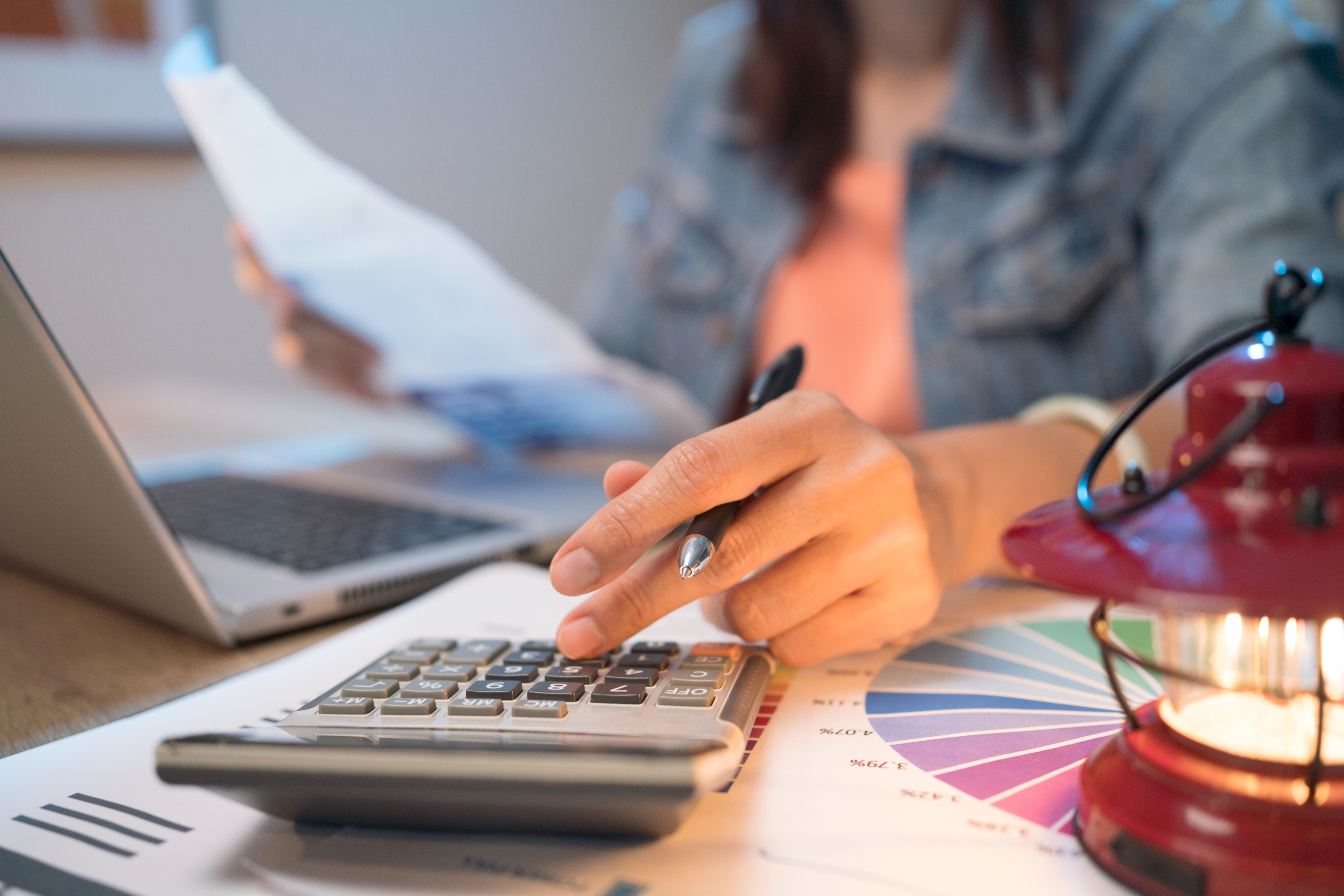What $5 Gas Would Mean to the U.S.
Twelve ways $5-a-gallon gasoline prices would likely impact consumers; businesses; local, state and national government; and the economy.
With today's volatile oil prices, paying $4 a gallon for gasoline during the heavy driving season this summer is a fair bet and even $5 a gallon isn't unthinkable. Though we at Kiplinger do not expect oil prices to skyrocket beyond about $110 a barrel this summer, any major supply threat -- heightened tensions with Iran over its nuclear ambitions or significant weather-related disruptions to U.S. refineries, for example -- would likely send motor fuel prices soaring, at least temporarily.True, the U.S. economy is no longer as dependent on oil as it was 40, 30 or even 20 years ago, but sharp energy price hikes still pack a wallop. Gasoline prices reaching and staying at $5 a gallon for three or four months would likely shave at least a few tenths of a percentage point off already lackluster economic growth for the year. Consumers would reduce their spending on other goods and services to offset the higher tab at the pump. Businesses would likely be more cautious about hiring, adding months to the already achingly slow recovery of the 8 million jobs lost in the recession. The impact would be felt, in ways both obvious and subtle, across the economy.
1. Crowded Commuter Trains and Buses
Public transit ridership will soar as more folks trade the convenience of driving their own cars to work for the savings of a shared subway bench. In summer 2008, when gasoline prices last peaked, mass transit use across the nation jumped 6.5% from the summer 2007 level. If pump prices hit $5 a gallon this year, even more folks will ditch their daily drives.
Higher fuel bills will take a toll on transit budgets, too. Aside from labor, fuel is the biggest expense transit systems face. Nationwide, mass transit systems account for about 783 million gallons of gasoline and diesel use per year. Philadelphia is already budgeting an extra $1.5 million for diesel fuel when its current purchase contract is renewed this summer. And that's assuming a price well below $5 a gallon. If pump prices hit the $5 mark, it'll cost Philly an additional $2 million.
From just $107.88 $24.99 for Kiplinger Personal Finance
Be a smarter, better informed investor.

Sign up for Kiplinger’s Free Newsletters
Profit and prosper with the best of expert advice on investing, taxes, retirement, personal finance and more - straight to your e-mail.
Profit and prosper with the best of expert advice - straight to your e-mail.
Nationwide, a 20% to 30% hike in prices would add $3.3 billion to $3.5 billion to the cost of public transit operations, in many cases forcing them to jack up passenger fares. The saving grace: A recent round of robust fare hikes at many transit systems means officials in some cities and counties will be reluctant to push through another increase.
Megabus, BoltBus and other transit lines that run between major cities will book up fast, in part because ticket prices aren't likely to rise much with the increase in gasoline costs. In 2006 and again in 2008, ridership rose enough for companies to offset the extra expense without raising fares. But since these bus lines charge based on popularity of travel times and dates, as well as how far in advance tickets are purchased, riders will have to either firm up their plans early or be flexible about traveling at off-hours to reap the benefit.
[page break]
(page 2 of 5)
2. More Potholes, Bigger Traffic Jams
Rising fuel prices spell bad news for the maintenance of roads, bridges and highways. Most states fund road construction and maintenance with the taxes collected each time motorists fill the tank. But as gasoline prices near $4 a gallon, consumers start to significantly cut back on discretionary driving and fill up less frequently. At $5 a gallon, they're sure to rein in their driving even more. Because gasoline and diesel taxes are based on the number of gallons sold, rather than the value of the sale, fewer fill-ups mean less tax revenue available to repave roads or repair crumbling overpasses.
In fact, as more-fuel-efficient cars are becoming the norm -- due both to heightened consumer desire for better gas mileage and a stepped-up push by the federal government to increase the average fuel efficiency of cars sold in the U.S. -- tax revenues are already drying up. In 2010, total federal taxes collected were $27.4 billion, compared to $30.5 billion in 2006 (adjusted for inflation). Over the same period, state fuel-tax revenues collected by New York, the state with the highest gas tax rate, fell by more than $100 million.
Don't be surprised if states increasingly turn to alternative means to raise funds, as fuel tax collections continue to ebb. That could mean additional reliance on toll roads or increases in vehicle titling fees and the like. Or it could mean simply raising the fuel tax rates, making gasoline even pricier.
3. Fewer Car Sales? Probably Not
Conventional wisdom has it that rising gas prices translate into falling sales. The logic: Consumers are reluctant to lay out the cash for a new set of wheels when the car will cost more to operate. In some cases, the higher fuel price means car owners can't swing the price of a new ride.
Yet, there are good reasons to believe that Americans will buy around a million more vehicles in 2012 than they did in 2011, despite the higher costs.
The economy is stronger than it was in 2008, when high gasoline prices helped chop about 3 million from 2007 sales. The punk economy then turned out to be the early stages of a severe recession. Now it's in recovery mode, and consumers are becoming increasingly optimistic about their prospects.
Consumers aren't as fazed by sharp spikes in gas prices as before. And automakers have bulked up their inventories of smaller, gas-sipping models and are delivering a slew of attractive new compacts with interior amenities that mimic bigger, more expensive cars while getting upwards of 40 miles per gallon on the highway. Hybrids will see another boom in demand, too, though they'll still be just a small percentage of total purchases.
4. A Boom in GPS Systems
Maximizing fuel efficiency will become increasingly important for businesses as gasoline prices soar. More car companies, cabdrivers, restaurant delivery services and others that make multiple short trips will turn to satellite-based navigation systems to make sure drivers don't go even a block beyond where they need to. More companies are also likely to install tracking systems such as Geomoto and NexTraq to check on drivers, making sure they're not wasting fuel by idling vehicles or making unscheduled stops.
Similarly, consumers will try harder to stretch their gasoline dollars further. More than two-thirds of consumers say they'll try harder to combine errands and minimize the number of separate trips required to get Johnny to soccer practice, pick up a gallon of milk and stop by the local hardware store.
[page break]
(page 3 of 5)
5. Shorter, Cheaper, Nearby Vacations
Americans won't give up their summer holidays just because they'll cost more. They will, however, choose destinations that are closer. Many of those who usually fly cross-country will choose to drive to someplace a bit closer to home. Others who typically drive a day or two to reach their chosen vacation spot may opt to stick within a one-day radius of home. And still others will try a "staycation," relaxing at home and plumbing the offerings of their home environs.
National and state parks can look forward to strong years, with more visitors opting to enjoy the hundreds of free or low-cost parks, rather than shelling out big bucks to fly across the country to tour Boston or visit Mickey and Minnie in Orlando, Fla. Camping out will get a popularity boost, and more families will downgrade from their usual hotel selections, making do with two-star lodging rather than a three-star hotel.
Casual and family-style restaurants are likely to see business drop off a bit. Families on the road, or simply seeking a night off from cooking, will be more inclined to pass up Denny's, Applebee's and similar restaurants in favor of bargain-basement-priced promotions at Taco Bell, McDonald's and others of that ilk. But white-tablecloth restaurants shouldn't feel much impact. Most of their diners are well-heeled enough to pay more at the pump and still spring for a steak at their favorite dining spot.
6. Pinched Municipal Services
Think your pickup truck is a gas-guzzler? Imagine filling the tank of a 14-ton fire engine -- or a small fleet of V-8-powered Ford Police Interceptors.
The average midsize city police department already spends an average of $100,000 a month to fuel its cop cars. So a 25% bump in pump prices that lasts about three months will cost the city taxpayers an additional $75,000 this year. For the fire department in Rochester, N.Y., a similar fuel price increase would tack on about an additional $110,000 to the taxpayers' tab. Another big fuel user: school buses. The Des Moines, Iowa, school system, for example, forks over $9 million a year to shuttle the city's 12,500 schoolchildren from home to school and back again, nine months out of the year, not to mention the hundreds of field trips and away basketball games that are accommodated. All told, the city's fleet of school buses logs 1.5 million miles a year. A $1-a-gallon jump in the price of diesel fuel -- used by most of the familiar yellow buses -- would raise the cost of providing those services by about $50,000 a month. That's a lot of bake sales.
Given how stretched most state and local budgets already are, the extra drain will be painful indeed. As a result, some cities and towns are contemplating charging fees when fire departments are called out. Others may be forced to raise taxes.
[page break]
(page 4of 5)
7. Pricier Pineapples and Costlier Milk
Roughly one dime of every dollar spent on food in the U.S. pays for transportation and fuel. So, in theory, a 25% increase in the price of fuel would add about 2.5% to the average family's monthly bill for meals. In fact, the impact is likely to vary a great deal, because the amount of fuel used in the production, processing and transportation of foods differs markedly from one product to another, and because the cost of fuel has a more immediate impact in some cases than in others.
Milk, for example, goes from cow to supermarket quickly, so the extra cost for trucking it may show up quickly, raising prices by a dime a gallon or so. And the price of tropical fruits and vegetables, which must be transported a long way, may tick higher.
In contrast, the price of beef, pork and eggs may not be affected much, at least this year. But much of that is because their prices already experienced steep hikes late in 2011. Sharply and unexpectedly higher fuel costs in late winter and early spring 2011 pushed up farmers' costs to prepare their fields, plant, grow and harvest millions of acres of wheat, corn and soybeans last year. The resulting higher grain and livestock feed prices meant higher costs for livestock producers, plus higher costs for them to transport their products to market. As a result, meat, egg and dairy prices soared by 8%-10% in 2011.
This year, however, farmers purchased a lot of their fuel in advance, locking in prices before they started to rise.
8. A Bigger Bill for Uncle Sam
As the single largest consumer of oil in the world, the U.S. military will certainly feel pain at the pump. In 2011, the various branches of the Defense Department gulped up 120 million barrels of fuel. Jet fuel alone accounts for 70% of the Pentagon's fuel use. Wonder why? Based on current oil prices, fuel costs to send a single F-18 fighter jet streaking across the country from New York City to L.A. would cost about $33,000. Every hour of flight for one of these superfast craft burns $11,000 of fuel.
Jets aren't the only military craft that get lousy mileage. An M1 Abrams tank takes about 1.3 gallons of fuel to cover one mile. All told, the Defense Department spent a total of about $17.3 billion on fuel last year. While that's a mere 2.6% of the U.S. military's total budget, a potential 25% increase in the price of oil-based fuels for a period of several months would tack an additional $3 billion to Uncle Sam's tab for keeping the military rolling.
9. A More Generous IRS
Folks who drive their vehicles for business will be able to claim higher deductions. Odds are that the Internal Revenue Service would raise the current 55.5¢-a-mile standard mileage allowance to account for the higher cost of gas. Best bet is an increase of 10¢-12¢ a mile if the national average price of regular gasoline climbs to $5 a gallon and stays there for at least a few months. There's precedent for a midyear allowance hike, too. When prices spiked in 2008 and 2011, IRS increased the mileage allowance for the last six months of each year.
10. Another Woe for the Post Office
Higher gasoline prices will slam the already beleaguered U.S. Postal Service. An increase of a single penny in pump prices costs USPS an additional $7 million a year. A jump of a buck a gallon, even if only for a three- or four-month period, would pour more red ink into the $16-billion flood it's expected to face this year.
Unlike the Post Office, private delivery services, such as FedEx and UPS, can and do jack up the prices they charge customers when fuel costs soar. Both companies already impose a fuel surcharge, adjusted once a month, based on the average daily spot price for diesel and jet fuel prices two months earlier. For example, in April UPS tacked 8% onto bills for ground transportation and 14% for air transportation.
[page break]
(page 5 of 5)
11. Rejiggered Household Budgets
If gasoline prices top $5 a gallon, the average U.S. household will wind up spending an extra $90 a month at the pump, a 39% increase from 2011. For most families, that money will have to come from cutbacks in spending someplace else.
Each household will, of course, make different choices about where to cut back. But for all households as an aggregate, spending on some products isn't likely to change. Health care won't be stinted. Consumers will continue to pay the same total amount for utility and phone services, as well. And judging from spending patterns during the Great Recession, when discretionary incomes were pared, consumers will continue to spend the same amount each month on tobacco and on baked goods and sweets.
Here's how household budgets, on average, will be reordered: $20 a month less on eating out. $5 a month less for alcohol purchases. Spending on apparel and shoes, down $20 a month. $15 less for movies, DVDs and other entertainment. Pets, toys and hobbies will get $10 less a month. About $10 a month will be saved by including less poultry, red meats and fish in meals, and $5 less a month will be spent on dairy products. And more kids, apparently, will have to clean their own rooms -- spending on housekeeping services and supplies will be trimmed by $5 a month.
12. More Gas-Price Variance
If the national average price for gasoline at the pump does reach $5 a gallon this summer, it won't mean everyone is forking out a fiver for every gallon they pump.
In fact, the difference between what consumers in some states may pay and what consumers in others shell out would easily top $1 a gallon. Some of the differences reflect transportation costs: That's why, for example, the country's highest-priced gasoline is in Alaska and Hawaii. Both are far from refineries and require costly transportation by ship. In contrast, gas stations in Wyoming, Oklahoma and Utah, for example, with their nearby refineries offer some of the least expensive fuel in the country.
But state taxes also account for a big chunk of the price differentials. New York, for example, with the highest gasoline taxes in the nation, tacks a whopping 49¢ per gallon on to motorists' bills. Calif., Connecticut and Illinois also have high gasoline taxes. In contrast, Arkansas, New Jersey and Missouri collect far less at the pump…between 8¢ and 17.3¢.
Profit and prosper with the best of Kiplinger's advice on investing, taxes, retirement, personal finance and much more. Delivered daily. Enter your email in the box and click Sign Me Up.
-
 I Need to Free Up $1,000 in My Monthly Budget, and I've Already Given Up Starbucks and Dining Out. What Else Can I Do?
I Need to Free Up $1,000 in My Monthly Budget, and I've Already Given Up Starbucks and Dining Out. What Else Can I Do?Here are some creative ways to save up to $1,000 a month, even if you feel like you've already made all of the obvious cuts.
-
 Steps to Get You Through the Open Enrollment Jungle at Work
Steps to Get You Through the Open Enrollment Jungle at WorkWondering how to survive open enrollment this year? Arm yourself with these tools to cut through the process and get the best workplace benefits for you.
-
 Amazon Resale: Where Amazon Prime Returns Become Your Online Bargains
Amazon Resale: Where Amazon Prime Returns Become Your Online BargainsFeature Amazon Resale products may have some imperfections, but that often leads to wildly discounted prices.
-
 Roth IRA Contribution Limits for 2025
Roth IRA Contribution Limits for 2025Roth IRAs Roth IRAs allow you to fund your retirement with after-tax dollars while you're working, and then withdraw those contributions and earnings tax-free when you retire. Here's a look at 2025 limits and income-based phaseouts.
-
 Four Tips for Renting Out Your Home on Airbnb
Four Tips for Renting Out Your Home on Airbnbreal estate Here's what you should know before listing your home on Airbnb.
-
 Five Ways to a Cheap Last-Minute Vacation
Five Ways to a Cheap Last-Minute VacationTravel It is possible to pull off a cheap last-minute vacation. Here are some tips to make it happen.
-
 How Much Life Insurance Do You Need?
How Much Life Insurance Do You Need?insurance When assessing how much life insurance you need, take a systematic approach instead of relying on rules of thumb.
-
 When Does Amazon Prime Day End in October? Everything We Know, Plus the Best Deals on Samsonite, Samsung and More
When Does Amazon Prime Day End in October? Everything We Know, Plus the Best Deals on Samsonite, Samsung and MoreAmazon Prime The Amazon Prime Big Deal Days sale ends soon. Here are the key details you need to know, plus some of our favorite deals members can shop before it's over.
-
 How to Shop for Life Insurance in 3 Easy Steps
How to Shop for Life Insurance in 3 Easy Stepsinsurance Shopping for life insurance? You may be able to estimate how much you need online, but that's just the start of your search.
-
 Five Ways to Shop for a Low Mortgage Rate
Five Ways to Shop for a Low Mortgage RateBecoming a Homeowner Mortgage rates are high this year, but you can still find an affordable loan with these tips.